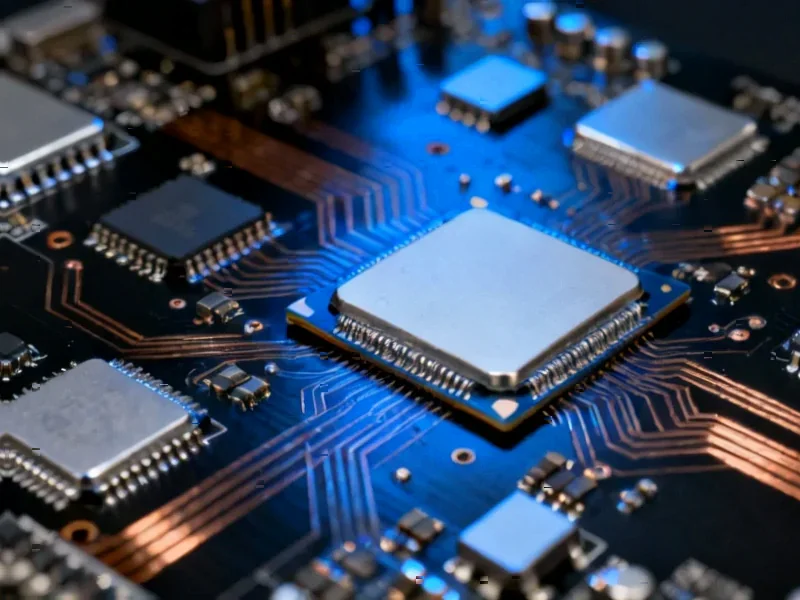According to Forbes, Robinhood Markets leads S&P 500 gainers with a 294% increase this year through October, followed by QuantumScape at 255%, Western Digital at 234%, Micron Technology at 167%, and Palantir Technologies at 165%. The analysis suggests Western Digital and Micron remain strong buys due to expected earnings growth driven by AI data center demand, while the other three stocks appear overvalued relative to current earnings. Western Digital benefits from high-capacity hard disk drives for AI data storage, with 22 of 27 analysts rating it a “buy,” while Micron’s HBM3E memory chips are experiencing record demand despite trading at 29 times trailing earnings. This AI-driven momentum raises important questions about the underlying technology fundamentals.
The Technical Foundation of AI Memory Demand
The surge in AI infrastructure spending isn’t just about raw compute power—it’s fundamentally reshaping memory architecture requirements. Traditional computing workloads could tolerate memory latency, but AI training and inference demand massive, high-bandwidth memory access patterns that current architectures struggle to satisfy. This creates a structural shift where memory performance becomes the bottleneck rather than processing speed. Micron’s HBM3E technology addresses this precisely by stacking memory dies vertically and connecting them through silicon vias (TSVs), dramatically increasing bandwidth while reducing power consumption compared to traditional DDR configurations.
Western Digital’s Storage Technology Advantage
While flash memory dominates performance discussions, the economics of AI data storage reveal why Western Digital’s position is stronger than surface-level analysis suggests. AI model training generates petabytes of intermediate data that don’t require nanosecond access times but must remain economically stored for potential retraining and analysis. Western Digital’s energy-assisted magnetic recording (EAMR) and ultraSMR technologies enable hard drives to achieve unprecedented areal densities exceeding 2.5 terabits per square inch. This technical progression allows cost-per-terabyte ratios that make petabyte-scale AI training economically feasible—a critical consideration as model sizes continue doubling every few months.
The Manufacturing Complexity Behind Memory Scaling
What most investors miss is the extraordinary manufacturing precision required for advanced memory production. Creating HBM3E stacks involves bonding multiple DRAM dies with micron-level alignment accuracy, then managing thermal dissipation across the entire stack—a challenge that has eliminated many competitors from the high-bandwidth memory market. Similarly, Western Digital’s transition to energy-assisted recording requires controlling magnetic domains at near-atomic scales using microwave-assisted magnetic recording (MAMR) technology. These manufacturing barriers create sustainable competitive advantages that aren’t easily replicated, protecting margins even as demand surges.
Structural Market Shifts Beyond Cyclical Patterns
The current memory market upcycle differs fundamentally from previous cycles due to AI’s structural impact on demand patterns. Traditional memory cycles were driven primarily by consumer electronics and enterprise server refresh cycles, creating predictable boom-bust patterns. AI introduces sustained demand from both cloud providers building dedicated AI infrastructure and enterprises retooling their data centers for AI workloads. This creates a dual-demand driver that could smooth historical cyclicality while extending the current growth phase. The critical insight is that AI isn’t just another application—it’s fundamentally changing how computing resources are architected and deployed.
Technical Roadmap and Future Challenges
Looking forward, both companies face significant technical hurdles that will separate winners from also-rans. Micron must navigate the transition to HBM4 architecture while managing yield challenges as stack heights increase from 12-high to 16-high configurations. Western Digital’s challenge involves maintaining areal density growth as conventional perpendicular magnetic recording approaches physical limits, requiring increasingly sophisticated signal processing and error correction. Both companies are betting that AI-driven revenue will fund the massive R&D investments required for these transitions—a bet that appears well-founded given the structural demand shifts underway in the computing landscape.




